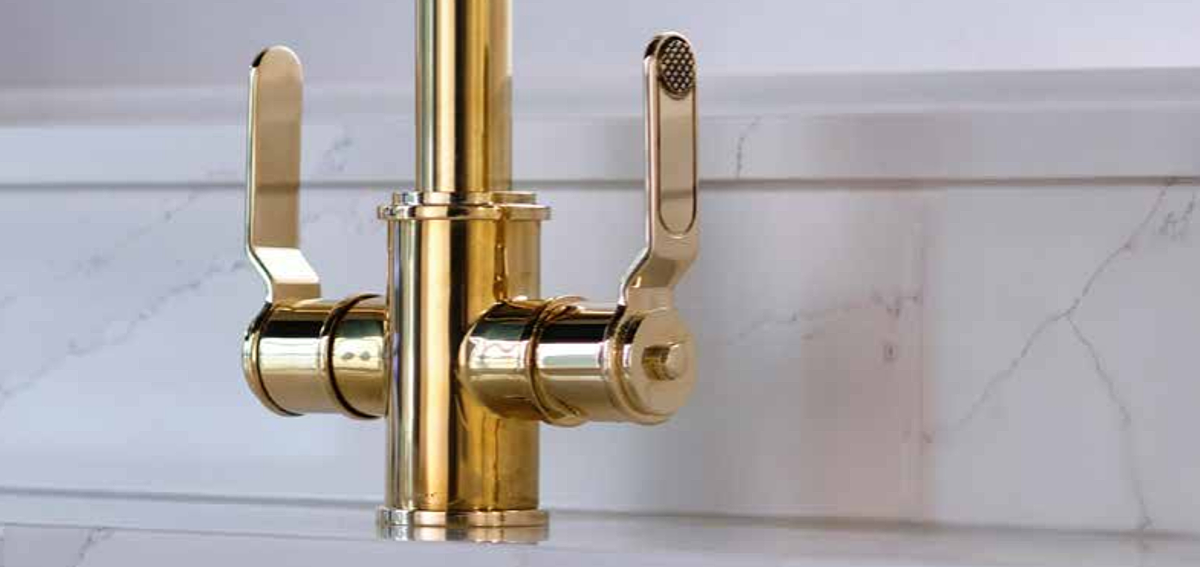
Why Your Kitchen Tap Leaks: Causes & Fix Solutions
|
|
Time to read 4 min
Written by: Taps UK
|
Published on
|
Time to read 4 min
There is nothing worse than having a leaking tap! With the constant dripping noise and the unnecessary waste of water. This is a guide to offer some advice on why your kitchen tap may be leaking and the meaning behind where the leak is coming from.
Okay, so the first step to resolving the issue is identifying where the leak is actually coming from. The most common problems we see are the following...
Leaks can vary in severity—from a constant stream of running water to an occasional drip every few minutes. Both are frustrating and usually trace back to the valve not shutting off completely. This is often linked to debris or limescale, especially in hard-water areas where mineral build-up affects the mechanisms inside the tap.
Common Causes of Tap Leaks
Debris in the valve zone – prevents the tap from shutting off fully.
Limescale build-up – common in hard-water areas; affects the valve’s ability to seal.
Installation errors – failing to flush pipes before fitting can push debris into the tap.
Design differences in traditional taps – some models lack aerators, which may cause brief water over-run after use.
Recommended Fixes
Remove the valve and soak it in warm soapy water to loosen debris.
If cleaning doesn’t resolve the issue, the valve may be damaged and will need replacing—contact your retailer for a replacement part.
For new installations, always flush pipes before fitting to prevent debris build-up.
If your tap is traditional and doesn’t include an aerator, expect some minor dripping after use as the spout clears; this is normal and not a fault.
One of the most common reasons for leaks around the spout is that it hasn’t been tightened enough onto the body of the tap. If the spout is loose, the O-rings can’t create a proper watertight seal. Thankfully, this is usually an easy fix and doesn’t require replacing the entire tap.
Common Causes of Spout Leaks
Loose spout connection – prevents O-rings from sealing properly, leading to leaks.
Worn or damaged seals – over time, seals at the base of the spout can deteriorate and lose effectiveness.
Recommended Fixes
For taps with a grub screw, tighten the screw slightly further to secure the spout.
For taps with a collar, twist the collar to tighten and create a better seal.
If the seals are damaged, contact the retailer for replacement parts. If the tap is out of warranty, you may need to purchase new seals separately.
This type of leak is caused by the seals being damaged at the top of the Flexi-hose. This is usually down to an installation error. They will have been overtightened, causing the O-rings to shred. However, this can also be due to the O-rings not being placed correctly, causing them to become trapped within the thread.
Sadly, there is not much that can be done to resolve this issue other than fitting replacement flexi-hoses or seals.
Leaks caused by the handles are most often linked to the valves. They may be damaged by debris or the handle itself may be too loose, preventing the tap from functioning properly.
Common Causes of Handle Leaks
Debris build-up – dirt or limescale inside the valve can stop it from sealing correctly.
Loose handles – if the handle isn’t secure, it won’t control the valve effectively.
Incorrect valve type – using a valve that doesn’t match your tap model can also result in leaks.
Recommended Fixes
Remove the valve, clean it in warm soapy water, and reinsert it.
Tighten the handle if it feels loose to improve performance.
If cleaning doesn’t work, you’ll need to purchase replacement valves.
Always check that the replacement valve is compatible with your tap, as valves come in different shapes and sizes.
Valves and O-rings are classed as working parts and are expected to be replaced periodically. They are often covered by a 6-month warranty unless stated otherwise.
Check carefully while the tap is running and turned off. If water drips directly from the spout, it’s likely a valve or cartridge issue. Leaks at the base often come from worn O-rings, while water around the handle usually points to faulty seals.
This varies depending on the brand and model of your tap. The best approach is to remove the old part and measure it, or check the manufacturer’s specification. Many suppliers, including Taps UK, list compatible replacement parts by tap model.
Yes. In hard water areas, limescale builds up inside valves and around seals, reducing their effectiveness and causing drips. Regularly cleaning aerators and descaling valves every few months helps prevent this.
Leaks in kitchen taps are a common issue, often caused by debris, worn parts, or installation problems. Most leaks are fixable without replacing the whole tap, through cleaning, replacing valves/O-rings, or tightening components. Regular maintenance helps prevent leaks, conserves water, and protects your fixtures. Knowing where leaks originate and how to address them keeps your kitchen functioning smoothly and conserves resources.
Clean out valves and aerators if water flow or a drip occurs from the spout—they are often blocked by debris or limescale.
Check spout tightness and handle O-rings/seals—leaks around these areas usually stem from looseness or worn parts.
In hard water areas, limescale build-up increases leak risk; periodic descaling helps maintain valve performance.
If DIY fixes fail or leaks are severe (e.g. constant flow), replace parts or consult a professional to avoid further damage.
Taps UK is a prominent online retailer in the United Kingdom, specializing in a wide variety of kitchen and bathroom products. The company boasts a large selection of taps, sinks, and accessories from both well-known industry brands and its own exclusive lines, catering to a broad customer base that includes the general public as well as trade professionals like developers and builders.
Email Us: hello@tapsuk.com
Call Us: 01527 868500
Get all the latests news and offers from our team right to your inbox
© 2025 TAPS UK . All Rights Reserved.






